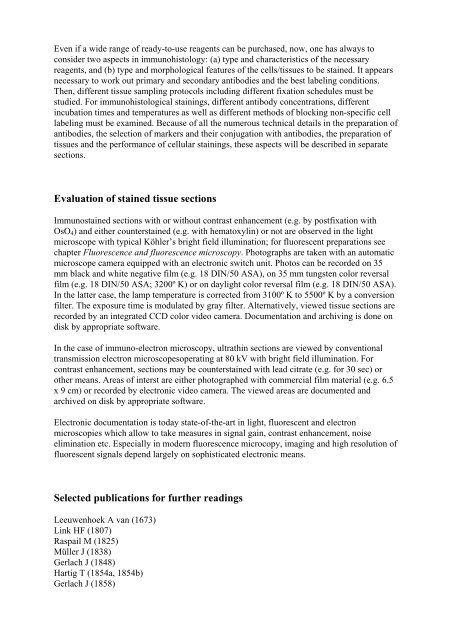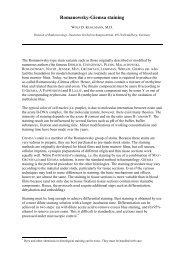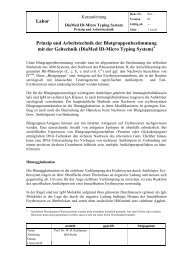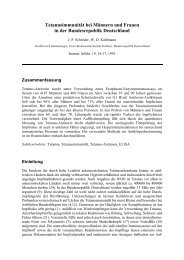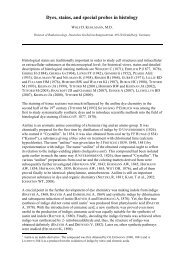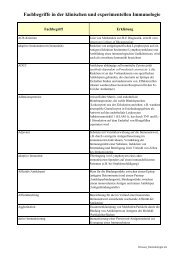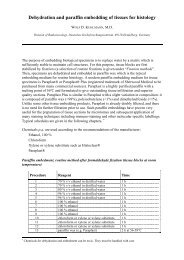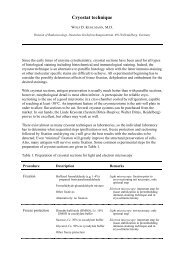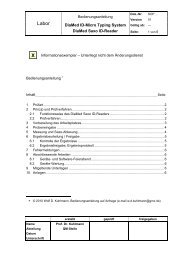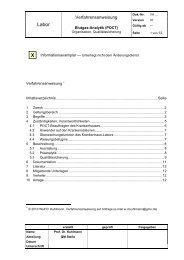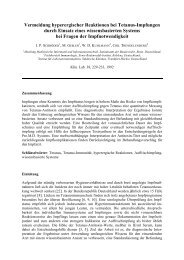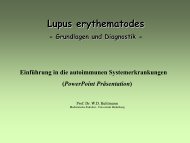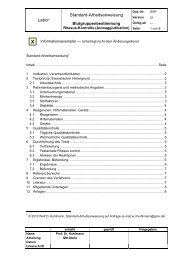Histological staining techniques
Histological staining techniques
Histological staining techniques
- No tags were found...
You also want an ePaper? Increase the reach of your titles
YUMPU automatically turns print PDFs into web optimized ePapers that Google loves.
Even if a wide range of ready-to-use reagents can be purchased, now, one has always toconsider two aspects in immunohistology: (a) type and characteristics of the necessaryreagents, and (b) type and morphological features of the cells/tissues to be stained. It appearsnecessary to work out primary and secondary antibodies and the best labeling conditions.Then, different tissue sampling protocols including different fixation schedules must bestudied. For immunohistological <strong>staining</strong>s, different antibody concentrations, differentincubation times and temperatures as well as different methods of blocking non-specific celllabeling must be examined. Because of all the numerous technical details in the preparation ofantibodies, the selection of markers and their conjugation with antibodies, the preparation oftissues and the performance of cellular <strong>staining</strong>s, these aspects will be described in separatesections.Evaluation of stained tissue sectionsImmunostained sections with or without contrast enhancement (e.g. by postfixation withOsO 4 ) and either counterstained (e.g. with hematoxylin) or not are observed in the lightmicroscope with typical Köhler’s bright field illumination; for fluorescent preparations seechapter Fluorescence and fluorescence microscopy. Photographs are taken with an automaticmicroscope camera equipped with an electronic switch unit. Photos can be recorded on 35mm black and white negative film (e.g. 18 DIN/50 ASA), on 35 mm tungsten color reversalfilm (e.g. 18 DIN/50 ASA; 3200º K) or on daylight color reversal film (e.g. 18 DIN/50 ASA).In the latter case, the lamp temperature is corrected from 3100º K to 5500º K by a conversionfilter. The exposure time is modulated by gray filter. Alternatively, viewed tissue sections arerecorded by an integrated CCD color video camera. Documentation and archiving is done ondisk by appropriate software.In the case of immuno-electron microscopy, ultrathin sections are viewed by conventionaltransmission electron microscopesoperating at 80 kV with bright field illumination. Forcontrast enhancement, sections may be counterstained with lead citrate (e.g. for 30 sec) orother means. Areas of interst are either photographed with commercial film material (e.g. 6.5x 9 cm) or recorded by electronic video camera. The viewed areas are documented andarchived on disk by appropriate software.Electronic documentation is today state-of-the-art in light, fluorescent and electronmicroscopies which allow to take measures in signal gain, contrast enhancement, noiseelimination etc. Especially in modern fluorescence microcopy, imaging and high resolution offluorescent signals depend largely on sophisticated electronic means.Selected publications for further readingsLeeuwenhoek A van (1673)Link HF (1807)Raspail M (1825)Müller J (1838)Gerlach J (1848)Hartig T (1854a, 1854b)Gerlach J (1858)


